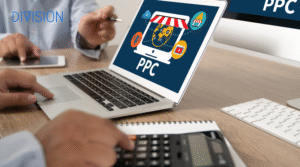In today’s competitive digital marketplace, e-commerce businesses need more than just a well-designed website to thrive. Paid advertising, especially Pay-Per-Click (PPC) campaigns, plays a crucial role in driving targeted traffic and increasing sales. With the right strategies, PPC can deliver measurable results and position online stores ahead of competitors.
Understanding PPC for E-commerce Businesses
PPC advertising is a model where businesses pay only when a user clicks on their ad. For e-commerce, this approach is especially powerful because it connects products directly with consumers searching for them. Whether it’s through Google Ads, Bing Ads, or social platforms, PPC ensures visibility at the right moment when a buyer is ready to make a purchase.
Unlike traditional advertising, PPC provides instant access to data. Campaign managers can monitor impressions, clicks, conversions, and cost per acquisition in real-time. This level of transparency makes PPC a flexible and controllable channel for growth.
Why PPC is Essential for E-commerce Businesses
E-commerce faces challenges like market saturation, fluctuating demand, and high competition. PPC offers solutions by providing immediate visibility and data-driven insights. Unlike organic strategies that take time, PPC delivers quick results, helping businesses:
- Reach highly targeted audiences
- Showcase products to users actively searching
- Control advertising costs with budgets and bids
- Gain measurable performance data
- Boost seasonal and promotional sales
For smaller e-commerce businesses competing with larger retailers, PPC levels the playing field by allowing them to appear in front of the same audience with strategically designed campaigns.
Crafting a Successful PPC Strategy
To maximize sales, e-commerce must build a structured PPC strategy. Random ads with no clear direction often result in wasted budgets. Instead, focusing on audience behavior, keyword intent, and ad quality ensures better outcomes.
Keyword Research for E-commerce Businesses
Choosing the right keywords is the foundation of PPC. For e-commerce, keywords should match both transactional and commercial intent. Instead of targeting broad terms, it’s effective to focus on product-specific and long-tail keywords that capture buyers ready to purchase.
Example: Instead of targeting “shoes,” a business could use “women’s running shoes under $100.” This level of specificity reduces wasted spend and increases conversion potential.
Optimizing Ad Copy
The ad copy must be clear, persuasive, and aligned with user intent. Highlighting benefits, special offers, and unique selling points encourages clicks. A strong call-to-action within ads can guide customers toward making quick purchasing decisions.
Landing Page Experience
Driving traffic without optimizing landing pages wastes opportunities. A high-performing landing page for e-commerce businesses should:
- Load quickly
- Display clear product details
- Include reviews and trust signals
- Offer easy navigation and checkout options
- Minimize unnecessary distractions
The landing page should directly connect to the ad’s promise. If the ad promotes “20% off running shoes,” the visitor should see those shoes and the discount immediately upon arrival.
Ad Extensions for More Value
Ad extensions like sitelinks, price extensions, and reviews increase visibility and engagement. These additions provide extra details about products, making ads more compelling and useful for searchers.
Also Read:- How PPC Marketing Can Rescue Your Business Right Now?
Measuring PPC Success for E-commerce Businesses
Success in PPC isn’t only about clicks—it’s about conversions. E-commerce businesses must track metrics that reveal the true return on investment. Key performance indicators include:
- Conversion rate
- Cost per acquisition (CPA)
- Click-through rate (CTR)
- Average order value (AOV)
- Return on ad spend (ROAS)
By analyzing these numbers, businesses can refine campaigns for better performance. Regular monitoring ensures wasted spend is minimized and winning ads receive more budget allocation.
Advanced PPC Tactics for Growth
Once the basics are in place, e-commerce businesses can take advantage of advanced PPC methods. These strategies help maximize reach and profits:
- Remarketing Campaigns: Re-engage users who visited but didn’t purchase.
- Shopping Ads: Showcase product images, prices, and ratings directly in search results.
- Dynamic Search Ads: Automatically match relevant queries with website content.
- Audience Targeting: Use demographics, interests, and behaviors to target ideal buyers.
- Seasonal Promotions: Leverage holidays and sales events with time-sensitive ads.
- Cross-Selling & Upselling Ads: Suggest complementary products to boost average order value.
These tactics keep e-commerce businesses competitive and ensure they maximize every advertising dollar.
Common Mistakes E-commerce Businesses Should Avoid
Even with great potential, PPC can fail if mismanaged. E-commerce businesses often fall into these traps:
- Focusing on vanity metrics like impressions instead of conversions
- Ignoring negative keywords
- Using generic ad copy
- Driving traffic to weak or irrelevant landing pages
- Setting unrealistic budgets without monitoring performance
- Not testing ad variations
Avoiding these pitfalls helps save costs and increase overall efficiency.
Integrating PPC with Other Marketing Efforts
PPC should not operate in isolation. E-commerce businesses can strengthen their overall marketing by aligning PPC with other channels. For example, running PPC alongside search engine optimization builds both short-term and long-term visibility. Social media campaigns can amplify promotions highlighted in PPC ads. Email marketing can be used to nurture leads gained from paid traffic.
This integrated approach ensures customers experience consistent messaging across touchpoints, making them more likely to trust and buy from the brand.
Future of PPC for E-commerce Businesses
The landscape of digital advertising is constantly evolving. For e-commerce businesses, staying updated with new trends and technologies ensures sustainable growth. Automation, AI-driven bidding strategies, and data integration will play a bigger role in campaign optimization.
Additionally, consumer expectations for faster and more personalized shopping experiences mean ads must deliver value instantly. For instance, personalization based on browsing history or cart behavior is becoming increasingly important. Voice search and mobile shopping trends will also shape how e-commerce businesses approach PPC.
Conclusion
For e-commerce businesses aiming to grow sales and compete effectively, PPC campaigns are a powerful tool. With precise targeting, data-backed strategies, and continuous optimization, Division Web Design ensures these campaigns create pathways for long-term success. By combining strong ad copy, optimized landing pages, and advanced tactics like remarketing, businesses can maximize their online visibility and profitability.
At Division Web Design, we understand the unique challenges e-commerce businesses face. Our expertise in building strategies that blend design and performance helps online stores not only attract customers but also convert them effectively. If you want to enhance your sales through PPC campaigns, our team is here to provide guidance and solutions that fit your goals.
Ready to improve your online store’s performance? Contact us today or visit our Google My Business to explore how strategic PPC campaigns can boost your results.




